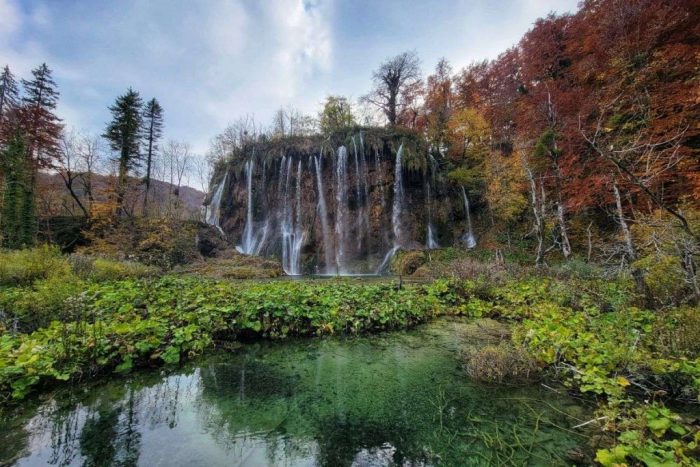Arches National Park Facts That Will Blow Your Mind
Arches National Park is one of the most beloved parks in the United States and for a good reason! Believe us – it rocks 😉. This national park in southeastern Utah has dramatic landscapes, excellent hiking, epic photo opportunities for the ‘gram, and more natural arches than you can imagine.
But hold up! There’s more to this park than some cool red rocks — it’s got a crazy cool history and some super interesting natural life. If you’re planning a trip to this must-see destination or just want to win that upcoming National Parks trivia night, we’ve got you covered with all the Arches National Park facts you could possibly want.
Interesting Facts about Arches National Park Geographical Features

Alright geologist junkies and you ladies who just like to learn about big rocks, let’s dish out some knowledge.
How Big Is Arches National Park?
Arches National Park is 76,519 acres or 119 square miles. That’s a whole lotta National Park land to take in, so there’s a 36-mile round trip road that gives you some perfect photo opportunities and trail access.
How Many Arches Are in Arches National Park?
Over 2000 arches live within the park’s parameters. However, the exact number is constantly fluctuating, as we continually discover new arches and other older ones collapse.
How Old Are the Arches in Arches National Park?
One of the main draws to visiting Arches National Park is obviously, the arches themselves and the fascinating history of the land. Believe it or not, most of the sandstone from this area is over 150 million years old! Some of the formations date all the way back to the Jurassic period.
Imagine how much of the world’s history these famous arches have lived through!
What Is the Tallest Arch at Arches National Park?
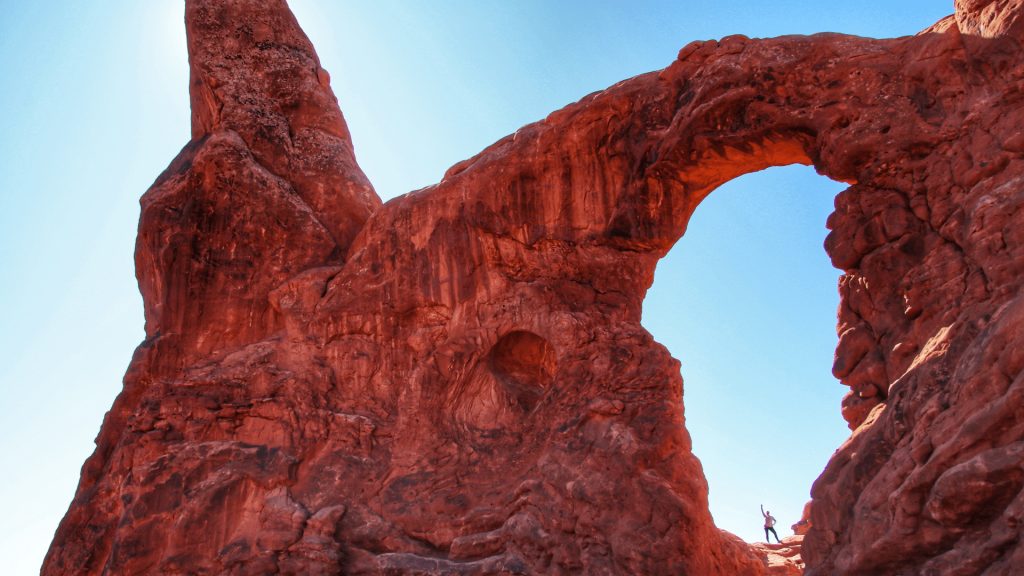
The tallest arch at the park is the southern span of Double Arch, looming at 112 feet above ground level.
What Is the Biggest (Longest) Arch in Arches National Park?
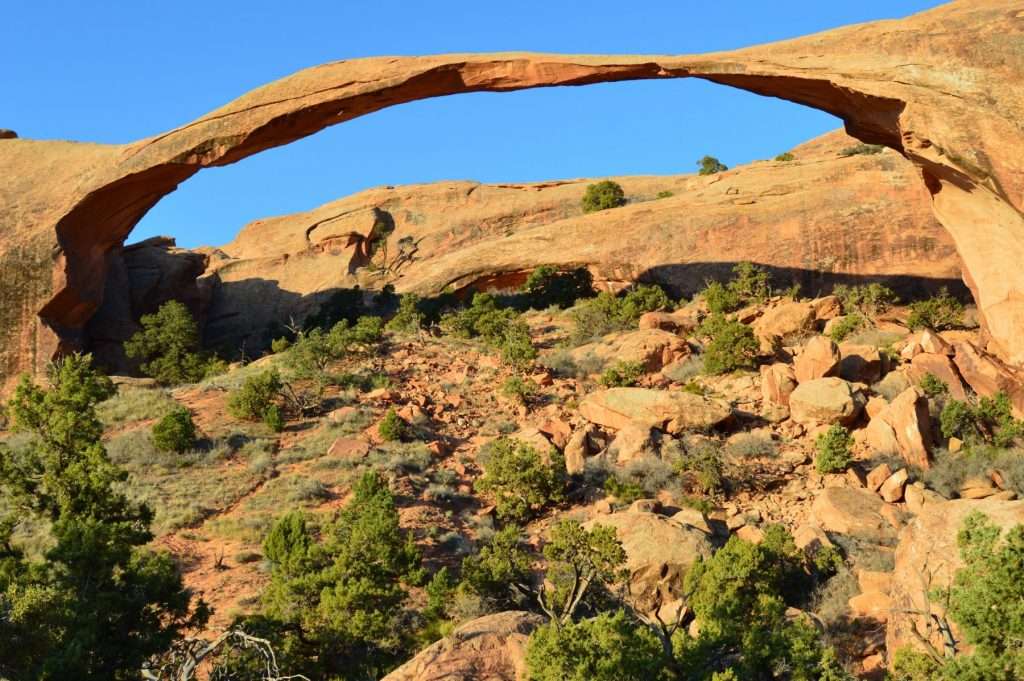
Not only is Landscape Arch the longest in the park, it also holds the record as being the longest arch in all of North America, spanning 306 feet. This treasure of Arches National Park lies on the popular Devils Garden trail, which is at the very end of the park road (around a 45-minute drive from the visitor center).
Landscape Arch holds the distinction as being the fifth longest arch in the world.
Do Arches Ever Fall?
Short answer: Yes. Sadly, it’s a natural part of an arch’s life, but they don’t fall too often on the grand scale of things (and we help with that by not touching or standing on any of the arches).
Erosion from wind and weather removes layers of rock, making changes over time. In 2008 for example, the Wall Arch suddenly collapsed. These types of collapses can be unpredictable which adds to the mystery and beauty of the arches.
What Are the Highest and Lowest Elevations of Arches National Park?
Arches lowest elevation is at the Colorado River, at 3,960 feet, though the National Park Service notes the Visitor Center as the lowest elevation at 4,085 feet. This could be because the Colorado River is right on the border of the park. The highest point is Elephant Butte, at 5,653 feet.
Why are Arches rocks red?
The crimson color of the arches is due to iron oxide in the sandstone sediment. Rocks can be all different colors depending on the minerals in them and what the conditions were when forming — was it underwater? Under pressure? With oxygen? Without?
The arches here are made from sandstone – Entrada Sandstone in particular. These grains of sand packed together when the whole area was under water, but once out of water, wind and rain has been slowly eroding the stone to create these formations.
Tourism Facts
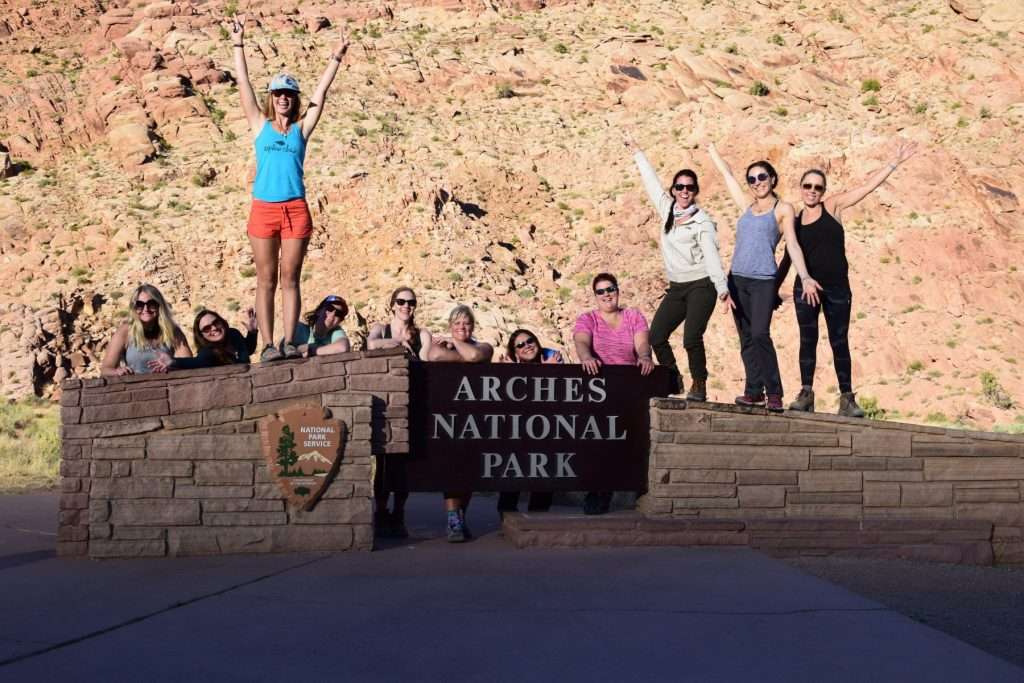
How Many People Visit Arches National Park Per Year?
There are over 1.5 million visitors annually to Arches and this number grows every year. Arches National Park is often found in “top ten” lists of popular parks to visit in the US.
What Is Unique About Arches National Park?
This is a landscape unlike any other you’ll see visiting any other parks in the US.
What Is the Most Famous Arch in the Park?
Delicate Arch is undoubtedly the most famous in the park and arguably one of the most iconic natural stone arches in the world. It’s such a stunner that the state of Utah chose to commemorate Delicate Arch on their license plates, so even if you haven’t been to the park in person, you may have seen a bit of it whizzing by you on the road.
Can You Drive Through Arches?
You can absolutely hit the road and see Arches by car. If you aren’t an avid hiker, there is a scenic drive that can make Arches National Park accessible for everyone. That being said, we highly recommend lacing up those hiking boots and seeing more of the arches by foot if possible!
Historical Facts

When Did Arches Become a National Park?
President Herbert Hoover created the Arches National Monument in 1929 and then in 1971, Congress designated the area as the 35th National Park.
Who Is the Most Famous Person Associated with Arches National Park?
Author and environmentalist Edward Abbey might be one of the most famous people associated with the park. His passion for the area and his book, Desert Solitaire shined a light on Arches and the whole area around Moab.
How Many Movies Have Been Filmed in Arches?
You may recognize several areas of Arches National Park because of its appearance on the big screen. Arches have been included in over 11 films, including award-winning movies like Indiana Jones and Thelma and Louise.
Who Were the First People in Arches National Park?
There is evidence of humans occupying the land of Arches National Park all the way back to 10,000 B.C. More recently, Ute and Navajo Indigenous tribes inhabited this region. To find what lands we are recreating on, you can use the app Native Lands to learn the history of our parks.
Naturalism Facts

Just because Arches is in a desert, doesn’t mean it’s a waste land! Sure, the high desert area isn’t the most hospitable landscapes out there, but it just means the animals that do live here are even more unique and specially adapted to the area!
How Many Types of Plant Species Are in the Park?
The park is surprisingly diverse! There are 483 species of plants in the park. While conditions may not appear hospitable at first, the flora of Arches varies from grasses, cacti and both evergreen and deciduous trees among others.
How Many Types of Birds Are in Arches?
There have been nearly 200 species spotted at the park. Again, you might not think this would be a bird watchers paradise on first inspection, but there are many species that migrate through this area. Seeing a Bald Eagle or Mexican Spotted Owl is not unheard of while exploring the park.
How Many Types of Mammals Are There in the National Park?
There are 52 species of mammals in the park.
How Many Species of Reptiles are in Arches National Park?
There are 21 species of reptiles in the park.
Are There Amphibians in Arches?
There are surprisingly several species of frogs, toads and salamanders within the park.
What Endangered Species Are in Arches National Park?
There are several endangered species in the park, including the Southwest Willow Flycatcher bird and a handful of fish like the Razorback Sucker or the Colorado Pikeminnow. Along with those species, there are around 20 other threatened plants and animals.
Bonus Arches National Park Facts That Will Blow Your Mind
Still not had enough Arches National Park knowledge? Then you’re in luck because we aren’t quite done! Here are a few more fun facts for you to flash out the next time you’re hiking around the arches.
- We didn’t name this park Arches for nothing; this region has the highest concentration of stone arches anywhere in the world!
- What is more fascinating than the sheer number of arches is that the trails we use within the park system in Moab were once totally submerged in water. Seawater subsided and left behind sand that the wind formed into dunes. Petrified dunes developed and through long term wind and rain, it formed the landscape we see today.
- Most of the wildlife within the park is actually nocturnal or crepuscular meaning they are most active at night or at dusk and dawn. This is because Arches is a high desert climate, meaning extremely hot summers and very little precipitation. This also means if you want to see wildlife, you’ll want to be around for either dusk or dawn.
Meet the Writer
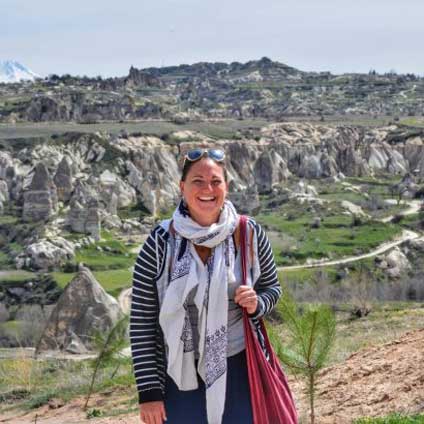
Abbie Synan
Abbie Synan is a freelance writer who focuses on sustainability initiatives within the tourism industry. Born and raised in Pittsburgh, Pennsylvania, she has been traveling full time since 2013, hopping the globe, visiting over 95 countries while exploring ways to be a more mindful global citizen. She is the sustainable travel expert for Wanderful, an international travel community, as well as the content co-lead for Impact Travel Alliance, a global organization educating and inspiring travelers.
Read More About Our National Parks
- Best Places To Travel In May In The USA
- Best Time To Visit Grand Canyon, According to Tour Guides
- Guide to Driving From Zion to Bryce Canyon National Parks
- Banff Hikes: 8 Best Hikes in Banff National Park
- Training to Hike the Grand Canyon: Gear, Tips, and Exercises
- Best Hiking in Midwest US: 7 Best Hiking Trails For Dreamy Views
- 13 Best Hikes in Forests and National Parks in Western US
- Angels Landing: The Scariest Hike You’ll Never Forget


